Tiny Combat Arena: First Impressions
- Santiago "Cubeboy" Cuberos
- Feb 22, 2022
- 6 min read
Updated: Feb 3, 2023
Flight simulation and flight arcade, as a genres, are vast. From casual entries such as Ace Combat to the full-fidelity representations of Digital Combat Flight Simulator, the spectrum of realism has no end. Some people prefer a casual experience, untethered by the shackles of realism; while others prefer feeling like they are in a virtual representation of a real aircraft that they have to learn and master to even be able to do the simplest of tasks.
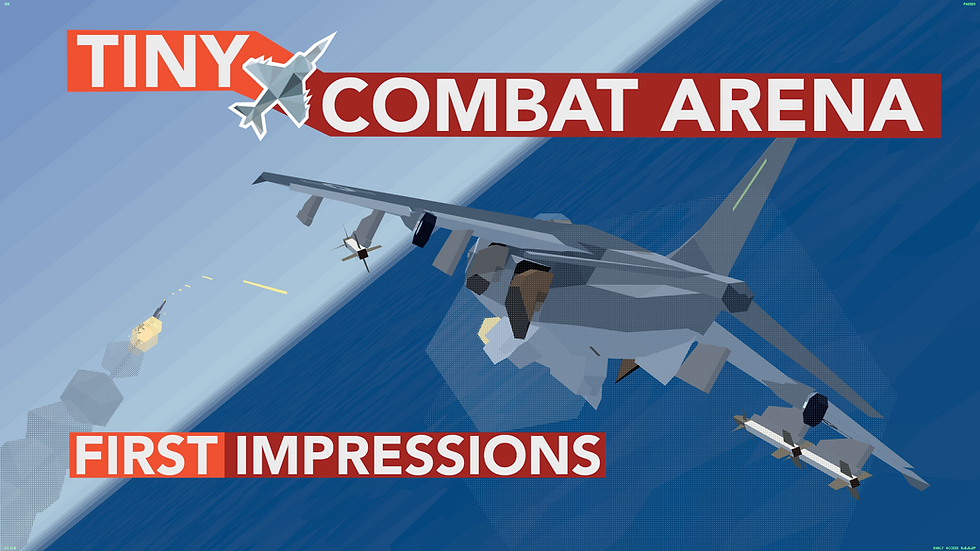
This is where a game like Tiny Combat Arena (TCA) comes into play. A mix of realism and casual gameplay, this game offers a plethora of fun scenarios for you to enjoy. Let's talk about TCA, its gameplay and features to see if it is a fit for you. DISCLAIMER: We were provided a pair of press copies by TCA's publisher, Microprose. There was no embargo or any strings attached. We had complete editorial control over this article.
WHAT IS TINY COMBAT ARENA?
If you want to learn about this game's past and its development, we highly suggest looking at our series of articles about TCA. This includes our full look at this game's history and a two part interview with its developer. With all of that out of the way, let's talk about TCA.
TCA is a sim-lite flight game with heavy inspirations from flight simulators from the 1990's, if that wasn't evident by the art style. It reminded me a lot of the old Novalogic and Jane's games, but the game where it seems to have gotten the most inspiration from was Parsoft Interactive's 1996 title: A-10 Cuba! Something that the developer does not shy from admitting.
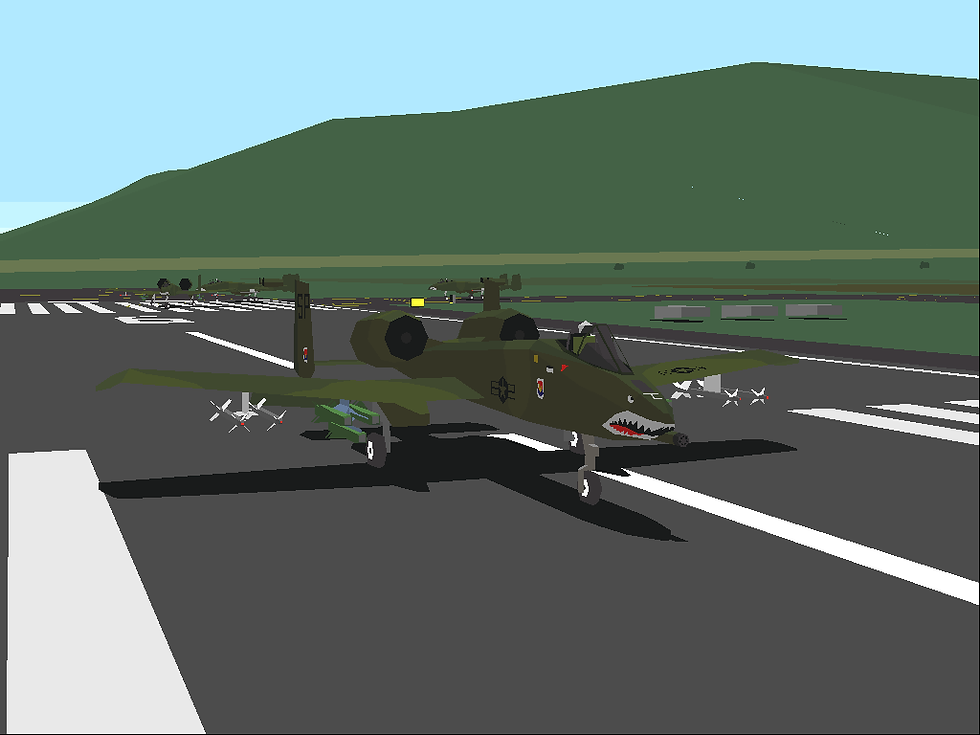
At its core, TCA is a spiritual successor to these flight sims of old. From its gameplay style to its looks. It is quite unique in this, and I love how the developer managed to emulate this art style without compromising too much.
The use of dithering to create opacities for materials is excellent. It looks great and, best of all, it does not feel unnatural. Here is an example of what I am talking about. Check the smoke, dust and explosions as they use this old-school rendering technique very well:
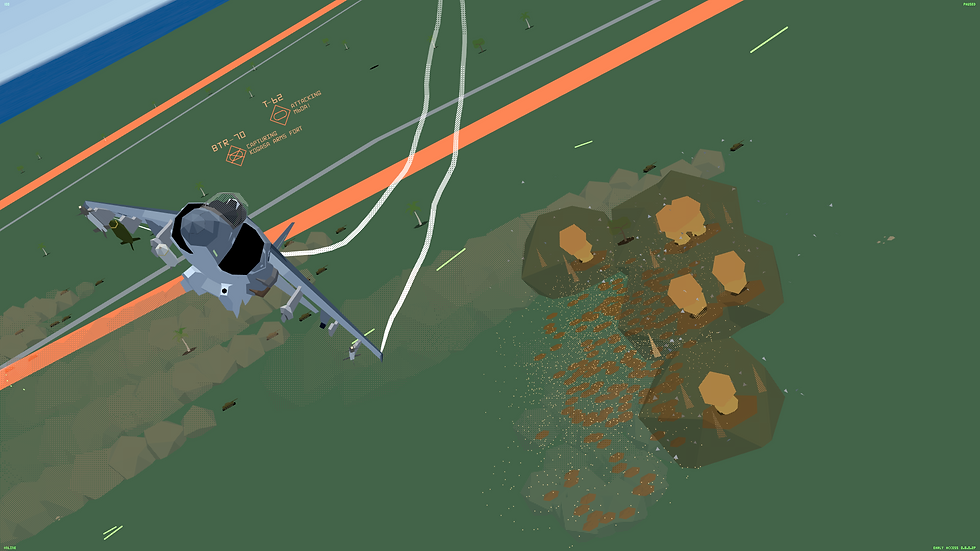
GAMEPLAY AND THE HARRIER
GAMEPLAY:
Gameplay-wise, this game is both familiar and unique. Familiar in the sense that it integrates an instant action mission creator (Quick Mission Builder of QMB) that reminded me a lot of the one that IL-2 1946 has. You can select different pre-made scenarios (Strike, Dogfight and Free Flight), which you then customize to your liking. For the dogfight mode you can set distance to merge, situation (neutral, advantage or disadvantage), altitude and the general loadout for the aircraft involved. You can also set AI difficulty levels, which will determine their behavior during combat. It is pretty complete, and I can see myself using it quite a lot. As for Strike mode, there are also plenty of options to keep you entertained.
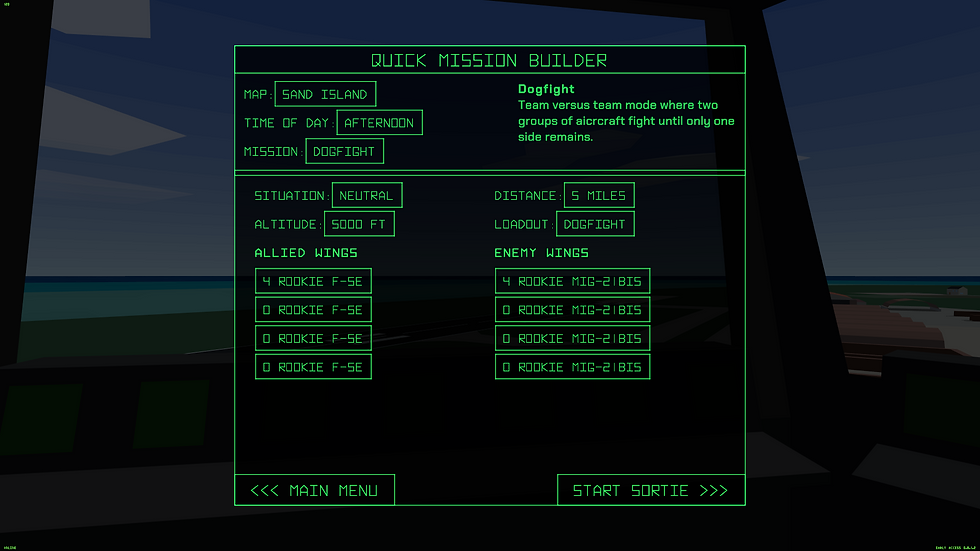
The QMB is all fine and dandy, but it is not the meat of what TCA is all about. That title falls to the Arena mode. This mode can be seen as a pseudo-dynamic base capture mode. Two factions fight over control of several bases, fighting to capture them with their armored units as well as air support. A single map is available at release for both QMB and Arena modes: Sand Island. Living to its name, the map is not big. One could even call it tiny, but the game loop has been structured in such a way that you will not feel the need to wander around for long. In Arena mode, as you can see below, the map has 5 different bases. Your side spawns with two under your control, while the enemy has three. The arrows indicate the direction armored units are taking as you do not have direct control over their movement. These lines are as a pretty good indicator of where frontlines have been established. Your objective is to support your units and secure all bases for your side. Only then you will win. Simple yet entertaining.
Ground units and air units do their own thing and move around, engaging enemy combatants at will. It is quite amusing seeing them in combat.
THE HARRIER
The only flyable aircraft in TCA, the Harrier will be your workhorse. It is capable of carrying insane amounts of firepower, both guided and unguided. While some people might be disappointed that all the other aircraft are not flyable, I sincerely do not mind it.
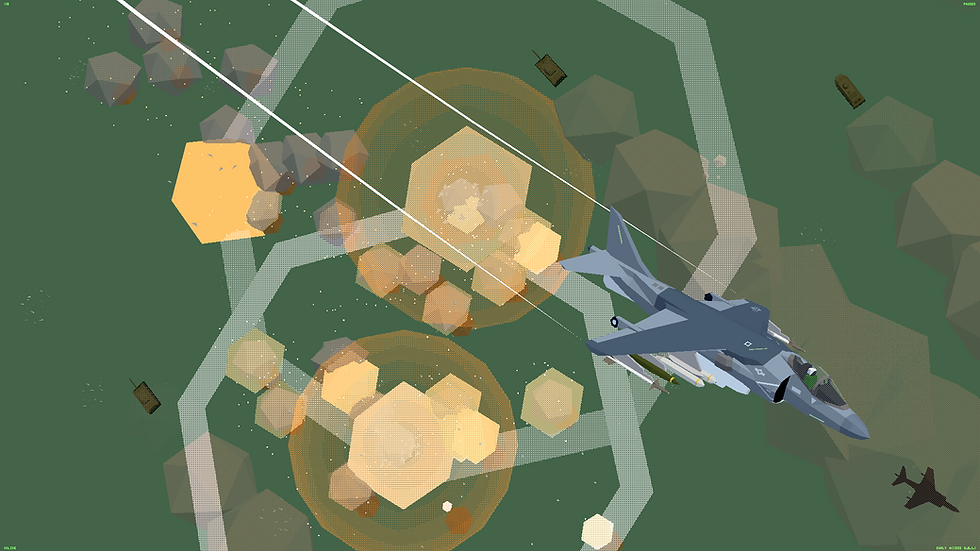
Its flight model is quite realistic in the way that it behaves. You lose airspeed as you do tight turns, you gain airspeed on a dive. There is certainly a solid energy management game here, one where the aircraft does not feel like a paper plane that you can throw around like it weighed nothing. You will have to conserve your fuel and care about your stores because, after all, they are not unlimited. I had a lot of fun dogfighting against MiG-21s!
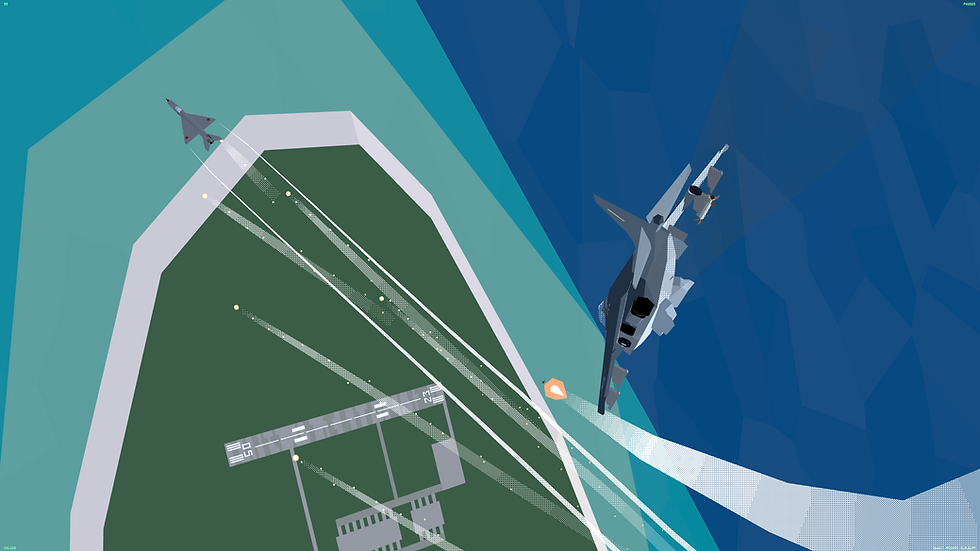
The VTOL controls are a dream. Don't go thinking that they are exclusive to doing landings and take-offs. Just like with the real Harrier, you can move your nozzles mid-flight to make your turns tighter under certain circumstances, or just straight up move yourself on a different axis to set yourself for a shot. This is what Vector in Forward Flight or VIFFing is all about.
EARLY ACCESS, BUGS AND THE FUTURE
Despite all the praise that has been said, not everything is perfect. One has to be aware that this game released in Early Access so bugs and issues are to be expected. This in itself is not an issue as many games have done this before. The problem comes from a just a couple of bugs that just cannot be fixed, at least according to what I have talked with the developer. The first of these is a floating point precision error that occurs when the player moves in the vertical axis. The higher you go, the more it is noticeable. While it is only a minor annoyance at 5K feet, it really starts to show once you go above 15K feet. Here is an example of this error.
The developer said that this problem is caused by the rendering/game engine limitations, so the further away you go from the origin point, the worse this effect becomes. It is not something that can just be patched out.
The other bug is one that affected me personally, but might not affect you. It is related with controllers and the way the game currently sees input devices with negative axis controls. These lead to infinite acceleration, allowing you to go Mach 9.4 or more. I will not lie when I say that this bug frustrated me to no end, as I was unable to fly as I was meant to. It was borderline unplayable. I reconnected my controllers time and time again, resetting their bindings and remapping everything countless times. But there is is a good side to all of this frustration. This is currently being worked on by the developer, who has been extremely open when it comes down to addressing and fixing bugs that they community finds. As time moves on, I expect a lot of the major and minor bugs to be removed from the game as it receives more polish and content. Why485, the developer, has shown that he cares deeply about fixing and tidying up his game, something that is commendable in this day and age where the broken AAA games are the norm.
CONCLUSION
I have personally wanted for quite a while. A casual yet deep experience that threads the line between simulator and arcade. It is a fun game by nature, one that has a lot of promise. While it lacks content at the moment, I am sure that Why485 will add more maps, mission types and scenarios for us to enjoy as time moves on. A
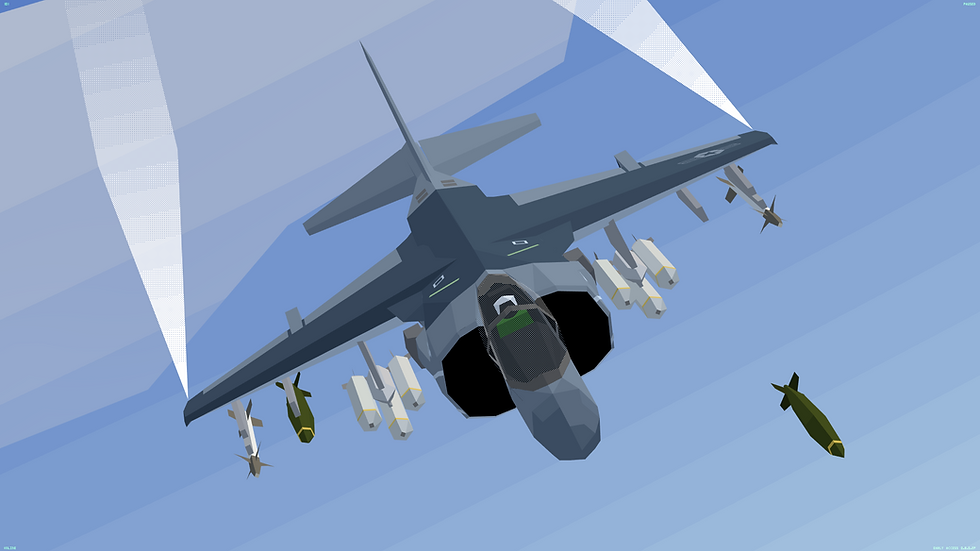
After 10 hours of flying it I can say that I sincerely enjoyed my time with the Harrier, too. Its systems are basically non-existent aside from having to manage fuel and keeping an eye on your ammo. Everything is gamepad friendly, yet, I still feel the same joy as I would feel from flying in a complex simulator such as DCS World. It is that balance that defines what TCA is. What we have here are some excellent foundations for an even greater game. Congratulations, Why485!
About the author
Santiago "Cubeboy" Cuberos

Longtime aviation fanatic with particular preference towards military aviation and its history. Said interests date back to the early 2000's leading into his livelong dive into civil and combat flight simulators. He has been involved in a few communities but only started being active around the mid 2010's. Joined as a Spanish to English translator in 2017, he has been active as the co-founder of Skyward Flight Media. Twitter | Discord: Cubeboy #9034











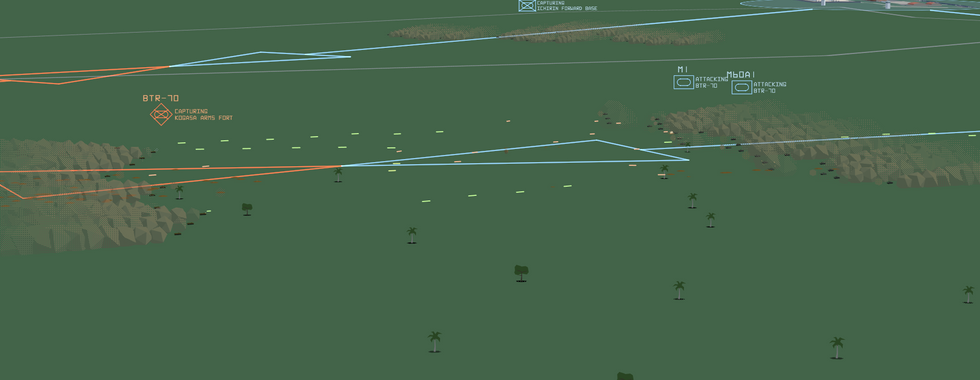













.png)